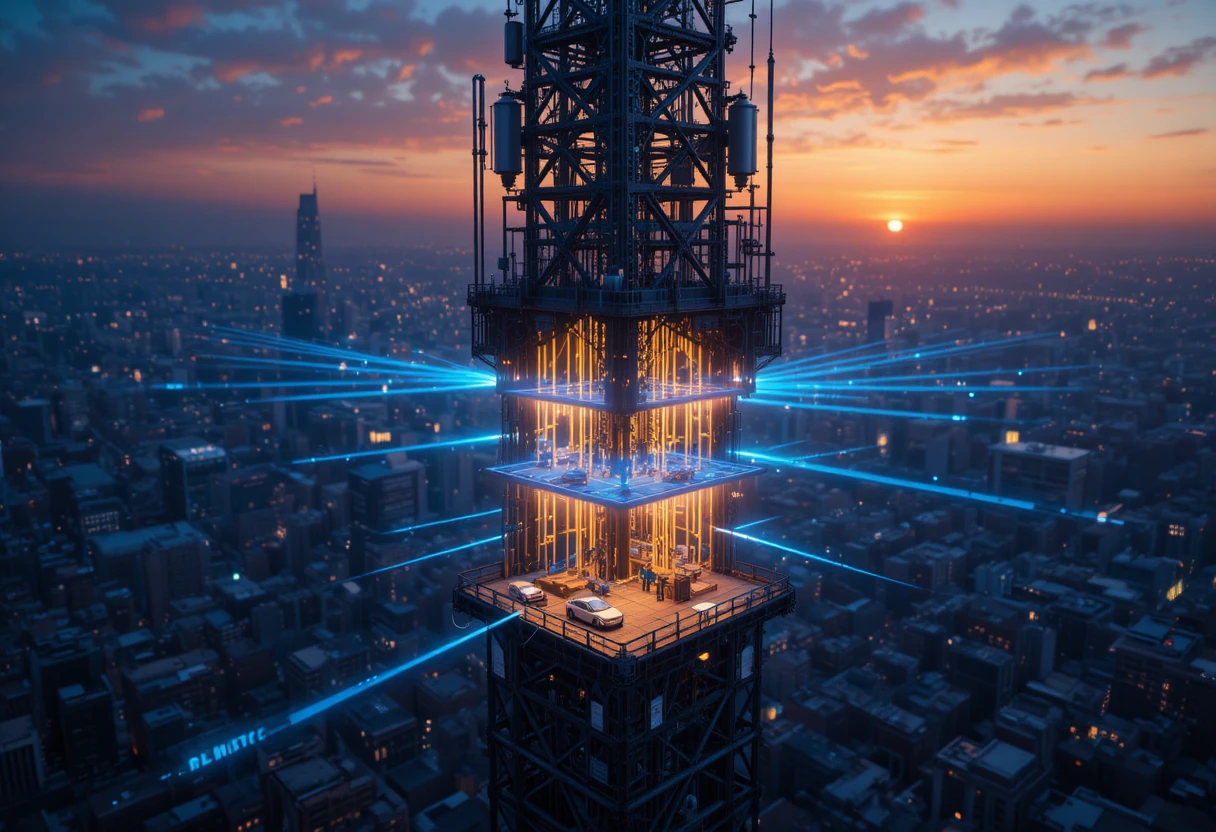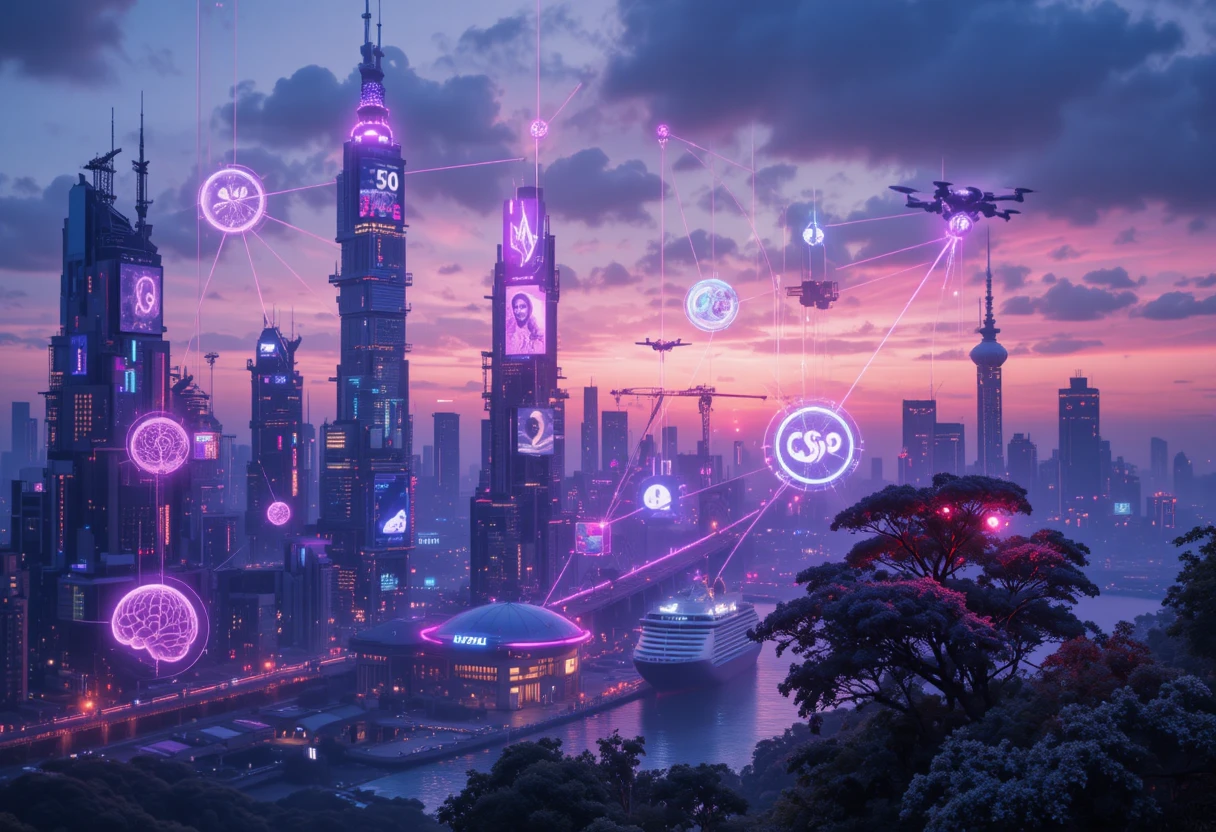5G Connectivity Unleashed
In 2025, 5G is no longer a buzzword—it is the oxygen of the digital world. With over 5.6 billion global subscriptions, 1.2 Gbps median download speeds, and 99.9% population coverage in developed markets, 5G has fulfilled its promise of transforming connectivity from a utility into a platform for innovation. From fixed wireless homes delivering fiber-like speeds to autonomous vehicle fleets navigating cities in real time, 5G has unleashed a wave of applications that were once science fiction. As of October 22, 2025, 70% of global mobile traffic runs on 5G networks, powering everything from holographic telepresence to remote brain surgery.
This 3,000-word deep dive explores the technical architecture, spectrum strategies, real-world deployments, industry transformations, challenges, and future evolution of 5G—proving that we are only at the beginning of its true potential.
The Technical Foundation of 5G
Millimeter Waves, Sub-6, and Dynamic Spectrum Sharing
5G operates across three spectrum bands, each serving distinct use cases:
- Low-band (sub-1 GHz): Delivers wide-area coverage (up to 200 km² per site) and deep indoor penetration. Used for rural IoT and basic mobile broadband.
- Mid-band (1–6 GHz, especially 3.5 GHz C-band): The “goldilocks” spectrum—balancing speed (up to 1 Gbps) and coverage (1–3 km). 80% of 5G traffic flows here.
- High-band (mmWave, 24–100 GHz): Ultra-fast (up to 10 Gbps) but short-range (200–300 m). Ideal for dense urban hotspots, stadiums, and factories.
Dynamic Spectrum Sharing (DSS) allows 4G and 5G to coexist on the same frequency, enabling rapid rollouts. In 2025, AI-driven spectrum optimization adjusts bands in real time—allocating mmWave for AR gaming in a café, mid-band for 4K streaming on a train.
Massive MIMO and Beamforming
Massive MIMO (Multiple Input Multiple Output) uses 64T64R (64 transmit, 64 receive) antennas per sector—vs. 8T8R in 4G—serving 200+ users simultaneously on the same frequency. Beamforming directs signal beams to individual devices, boosting efficiency by 400%.
In Tokyo, NTT Docomo’s 256T256R deployments achieve 3.2 Gbps per user in crowded Shibuya crossings. MU-MIMO (Multi-User MIMO) allows 32 users to share a single beam, critical for concerts and airports.
Network Slicing and Edge Computing
Network slicing creates virtual networks on shared infrastructure:
- eMBB (enhanced Mobile Broadband): For 8K streaming and cloud gaming.
- URLLC (Ultra-Reliable Low-Latency Communications): <1 ms latency for autonomous vehicles and robotic surgery.
- mMTC (massive Machine Type Communications): Low-power for 1 million IoT devices/km².
MEC (Multi-access Edge Computing) pushes processing to the network edge. A 5G tower in Seoul hosts a mini data center, reducing latency from 50 ms (cloud) to 4 ms. This enables real-time AI inference—e.g., a smart factory robot adjusting grip based on camera feed processed locally.

Global 5G Rollout: Leaders, Laggards, and Surprises
South Korea: The 5G Utopia
South Korea reached 96% 5G coverage by 2023. In 2025, SK Telecom’s median speed is 1.8 Gbps, with Busan’s smart port using 5G to coordinate 400 autonomous cranes. 5G private networks power Samsung’s Suwon factory, achieving 99.9999% uptime in chip production.
China: Scale and Speed
China Mobile serves 650 million 5G users—more than the population of Europe. Standalone (SA) 5G (fully independent of 4G) covers 100% of cities. In Shenzhen, 5G-powered drones deliver medical supplies in 7 minutes, vs. 45 by road.
United States: A Patchwork of Excellence
Verizon’s mmWave Ultra Wideband hits 4.2 Gbps in NYC, while T-Mobile’s 2.5 GHz mid-band blankets suburbs. Fixed Wireless Access (FWA) serves 12 million U.S. homes, replacing cable in rural areas. AT&T’s FirstNet provides priority 5G for first responders.
Europe: Steady but Fragmented
The EU’s 5G Action Plan lags—only 78% coverage in 2025. Germany leads with Deutsche Telekom’s 3.6 GHz network, while Italy’s Vodafone powers Turin’s 5G smart city. Spectrum auctions remain slow; France only cleared 26 GHz in Q3 2025.
Emerging Markets: Leapfrogging with 5G
India’s Jio launched 5G in 2022, reaching 400 million users by 2025 at $2/month. Africa’s MTN uses 5G FWA in Nigeria, delivering 100 Mbps to villages skipped by fiber.
Industry Transformations Powered by 5G
Healthcare: Remote Surgery and Digital Twins
In 2025, 5G enables 300+ remote surgeries globally. Dr. Li in Shanghai operates on a patient in Tibet using haptic gloves and 4K 3D video over URLLC—latency 0.8 ms. Digital twins of organs, updated in real time via 5G wearables, predict heart attacks 12 hours early.
Manufacturing: Industry 4.0 in Action
Siemens’ Amberg factory uses 5G to coordinate 1,200 robots with zero downtime. Predictive maintenance via vibration sensors prevents $2.1M in annual losses. AGV (Automated Guided Vehicles) navigate via indoor 5G positioning accurate to 3 cm.
Transportation: Autonomous Everything
Waymo’s 5G fleet in Phoenix uses V2X (Vehicle-to-Everything) to avoid collisions—reaction time <10 ms. 5G-enabled trains in Germany run headless (no driver), increasing capacity by 30%. Drone taxis in Dubai rely on 5G for air traffic control.
Entertainment: Immersive Experiences
T-Mobile’s 5G powers volumetric video at NBA games—fans watch from any angle via AR glasses. Cloud gaming on Xbox Cloud hits 120 fps with 15 ms latency. Metaverse concerts (e.g., Travis Scott in Fortnite) stream to 10 million concurrent users over 5G.
5G in Everyday Life
Fixed Wireless Access (FWA): Cable’s Nemesis
5G FWA serves 50 million homes globally. In rural Iowa, U.S. Cellular delivers 800 Mbps for $50/month—no trenches, no permits. Self-install CPEs (Customer Premises Equipment) with AI beam alignment activate in 5 minutes.
Smart Cities: Data-Driven Urbanism
Singapore’s 5G sensors monitor air quality, traffic, and waste bins. Smart lampposts charge EVs, provide Wi-Fi, and detect gunshots. Barcelona’s 5G traffic lights reduce congestion by 23% using real-time vehicle data.
Education: Bridging the Digital Divide
In Kenya, Safaricom’s 5G connects 500 rural schools to VR classrooms. Students dissect virtual frogs with zero lag. AR textbooks overlay 3D models on paper via 5G phones.

Challenges and Criticisms
Infrastructure Costs and Energy Consumption
Deploying 5G costs $1.2 trillion globally. Small cells (1 per 200 m in cities) require fiber backhaul and power. A single mmWave site consumes 6 kW—vs. 2 kW for 4G. Liquid cooling and AI power management reduce usage by 30%.
Security and Geopolitics
Huawei’s dominance (35% of global 5G equipment) raises espionage fears. The U.S. bans Huawei in critical infrastructure; Europe mandates Open RAN by 2027. Quantum-safe encryption (e.g., PQ-Crypto) protects against future threats.
Health and Environmental Concerns
EMF (electromagnetic field) fears persist despite WHO studies showing no harm below ICNIRP limits. E-waste from 5G phones (shorter upgrade cycles) prompts modular designs—Fairphone 6 allows 5G module swaps.
The Future: 5G-Advanced and Beyond
5G-Advanced (Release 18, 2025–2026)
3GPP Release 18 introduces:
- AI-native air interface: ML optimizes beamforming in real time.
- Integrated Sensing and Communication (ISAC): 5G radars detect gestures and vital signs.
- NTN (Non-Terrestrial Networks): 5G via satellites (Starlink, OneWeb) for oceanic and polar coverage.
- RedCap (Reduced Capability): Low-cost 5G for IoT—$5 modules.
Path to 6G (2030)
6G will fuse terahertz waves, AI orchestration, and holographic MIMO. Speeds: 1 Tbps. Latency: 0.1 ms. Energy: 1/100th of 5G. Early trials begin in 2028.

Conclusion: 5G as the Fabric of Tomorrow
In 2025, 5G is not just faster internet—it is the nervous system of the intelligent planet. It connects 8 billion devices, empowers 1 billion creators, and enables trillion-dollar industries. From saving lives in operating rooms to empowering students in remote villages, 5G has democratized possibility.
The revolution is not in the spectrum—it is in what we build on it. As 5G-Advanced paves the way for 6G, one truth remains: connectivity is no longer a feature. It is the foundation of human progress.
The future is not coming. It is already streaming—at 1.2 Gbps and counting.